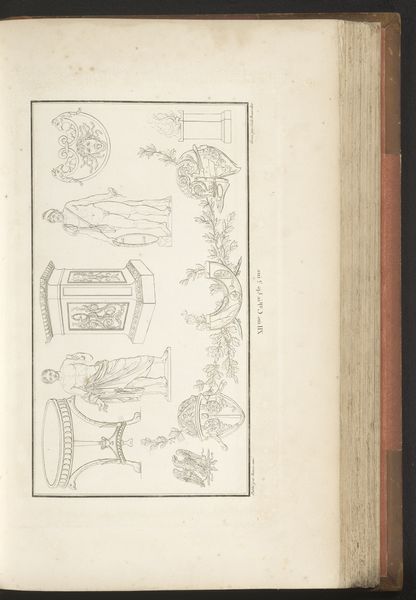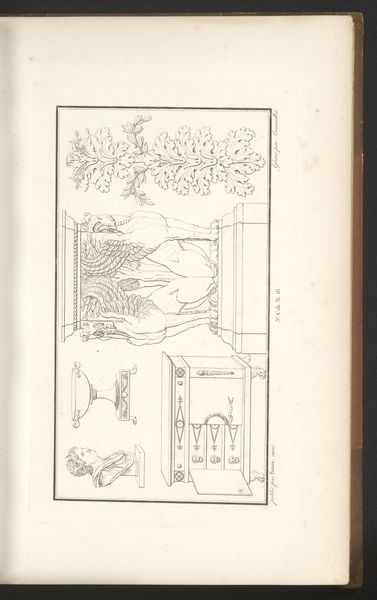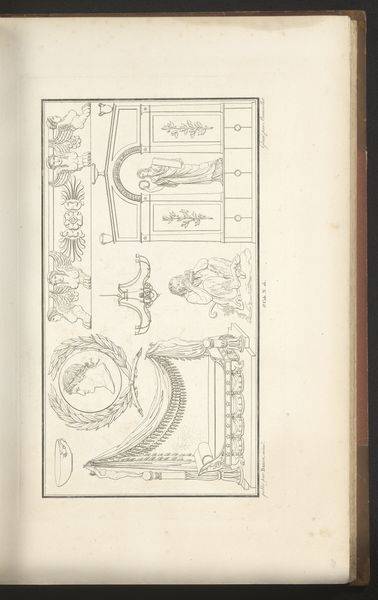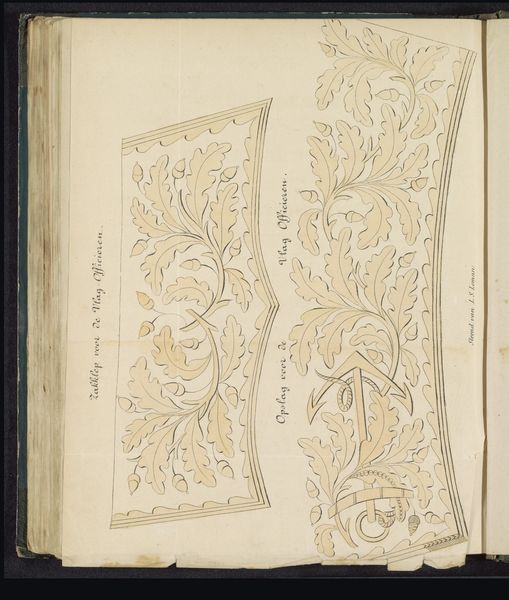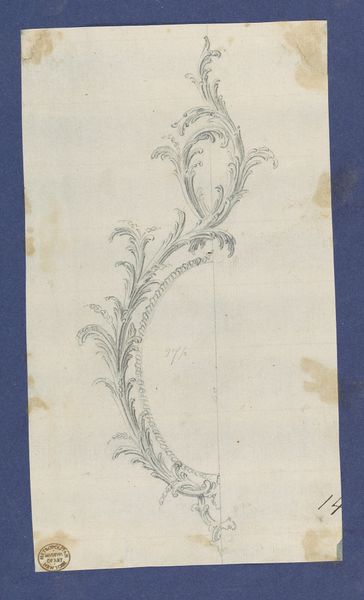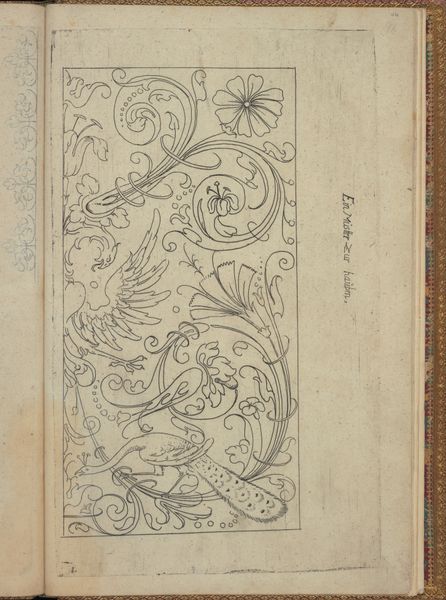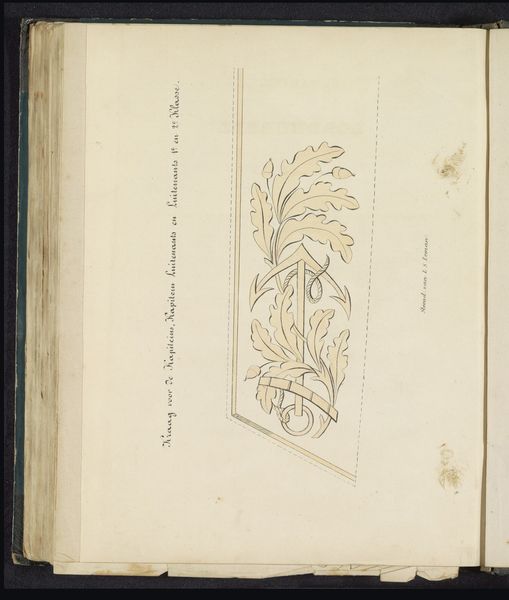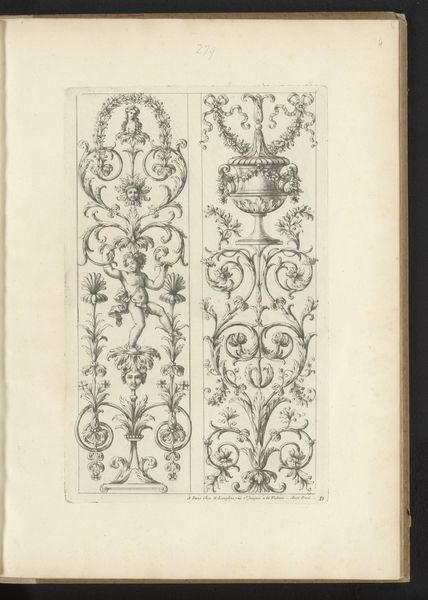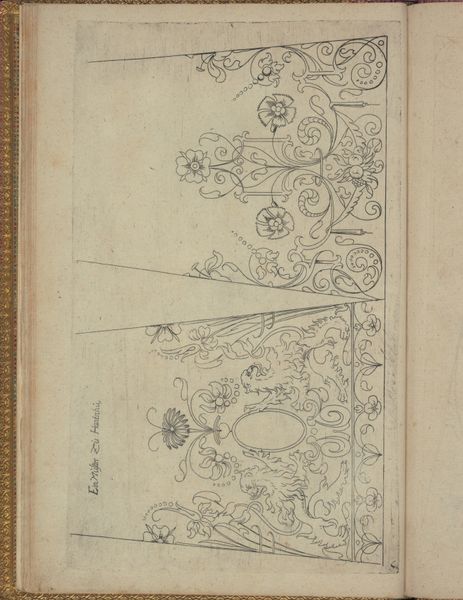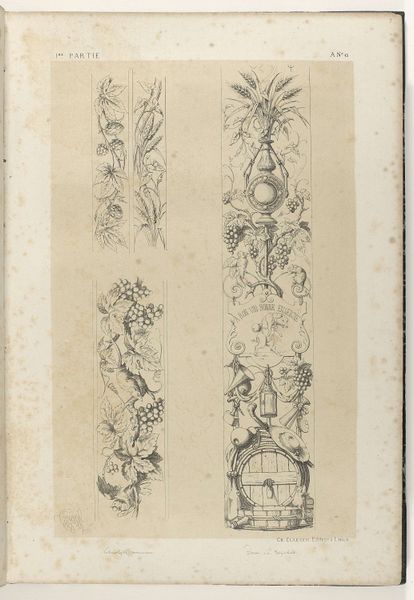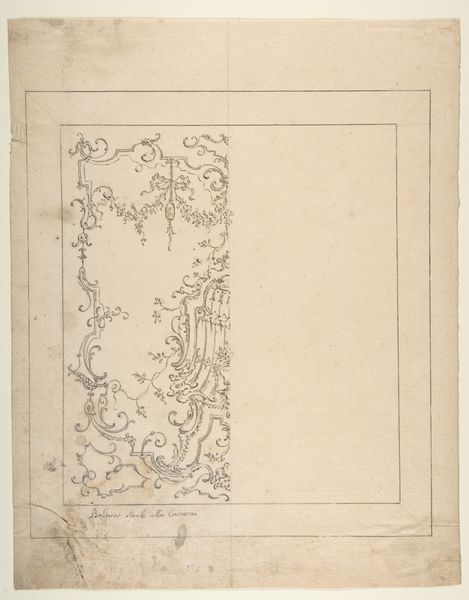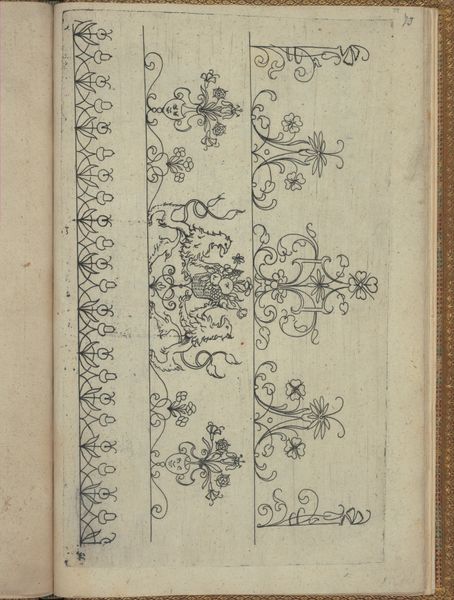
Scrapbook of Designs for Embroidered Waistcoats 1780 - 1790
0:00
0:00
drawing, print, paper, pen, pastel
#
drawing
# print
#
book
#
paper
#
pen
#
pastel
#
decorative-art
Dimensions: Overall: 15 3/8 x 10 7/16 in. (39 x 26.5 cm)
Copyright: Public Domain
Editor: This is a page from a “Scrapbook of Designs for Embroidered Waistcoats,” created between 1780 and 1790 by Fabrique de Saint Ruf. It includes drawings and prints in pen, pastel, and paper. What immediately strikes me is how delicate and intentional the designs are, really speaking to the care put into clothing of the time. What stands out to you? Curator: What captivates me is how these floral motifs—the lilies, the ribbons—act as more than mere decoration. In their time, each flower carried symbolic weight, echoing societal aspirations and personal identities. Consider how the waistcoat itself, worn close to the heart, became a canvas for expressing allegiances and affections. Editor: That’s interesting. So you’re saying the flowers chosen weren't arbitrary? Curator: Not at all. The language of flowers, or floriography, was well understood. Lily of the valley might represent purity and happiness. A carefully chosen bloom could speak volumes about the wearer's character or intentions, reflecting cultural values through visual symbols. It is like the emojis of their time. How might these repeating decorative forms inform personal expression, identity and social performance? Editor: It’s fascinating to think about clothing as a form of visual language, especially with such a rich vocabulary. These waistcoats became walking, talking expressions of self! I'll definitely look at decorative arts differently now, keeping an eye out for hidden meanings. Curator: Indeed. The scrapbook becomes a fascinating record. A window into a world where garments weren’t just worn, but consciously, eloquently, embodied. It serves as a tangible artifact which reflects society at a specific point in time.
Comments
No comments
Be the first to comment and join the conversation on the ultimate creative platform.
